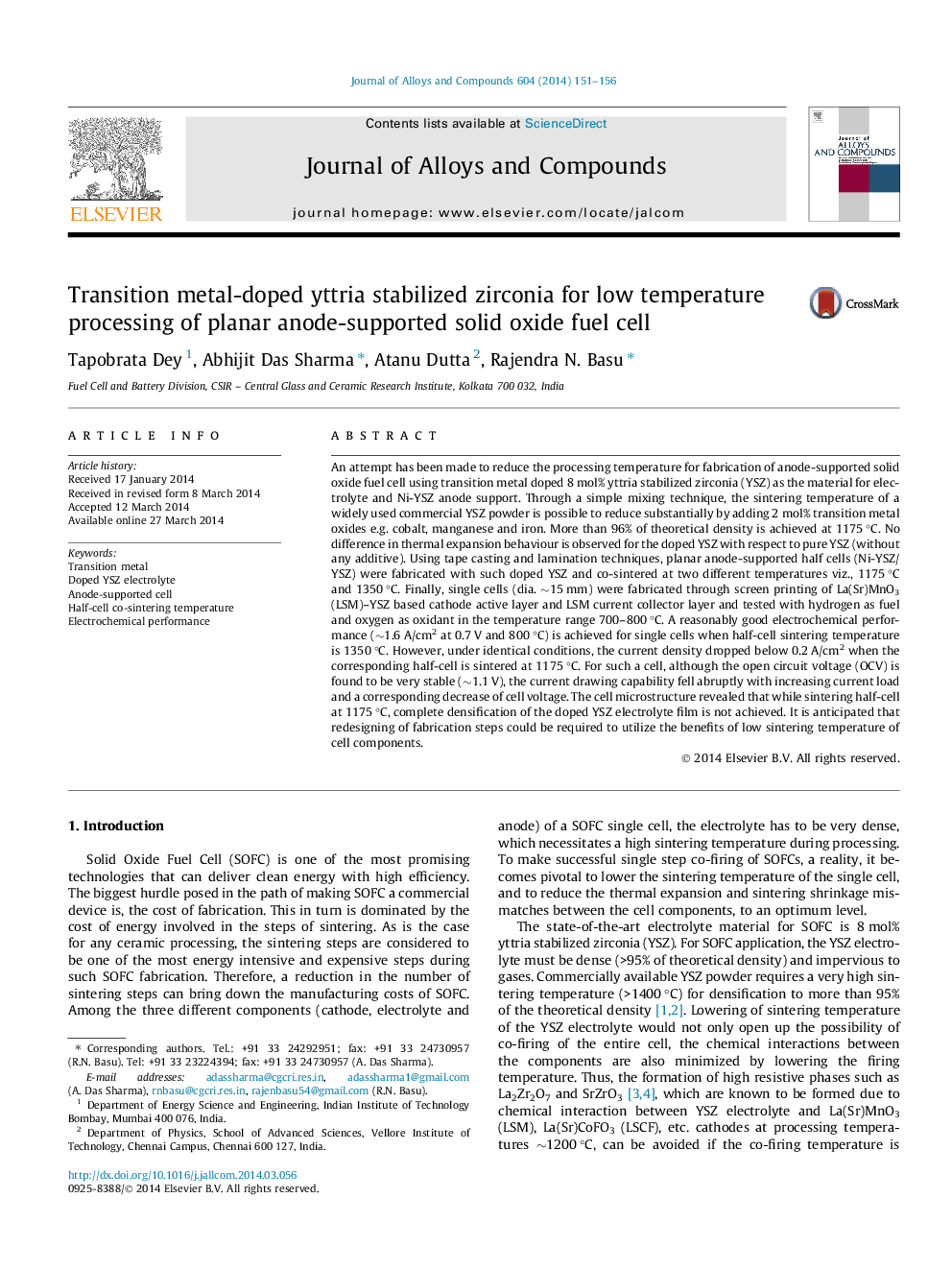| کد مقاله | کد نشریه | سال انتشار | مقاله انگلیسی | نسخه تمام متن |
|---|---|---|---|---|
| 1611104 | 1516289 | 2014 | 6 صفحه PDF | دانلود رایگان |
عنوان انگلیسی مقاله ISI
Transition metal-doped yttria stabilized zirconia for low temperature processing of planar anode-supported solid oxide fuel cell
ترجمه فارسی عنوان
یوتریای دوپت متحرک با گذشت زمان، تضعیف زیرکونیا برای پردازش دمای پایین آن از سلول سوختی اکسید جامد
دانلود مقاله + سفارش ترجمه
دانلود مقاله ISI انگلیسی
رایگان برای ایرانیان
کلمات کلیدی
موضوعات مرتبط
مهندسی و علوم پایه
مهندسی مواد
فلزات و آلیاژها
چکیده انگلیسی
An attempt has been made to reduce the processing temperature for fabrication of anode-supported solid oxide fuel cell using transition metal doped 8 mol% yttria stabilized zirconia (YSZ) as the material for electrolyte and Ni-YSZ anode support. Through a simple mixing technique, the sintering temperature of a widely used commercial YSZ powder is possible to reduce substantially by adding 2 mol% transition metal oxides e.g. cobalt, manganese and iron. More than 96% of theoretical density is achieved at 1175 °C. No difference in thermal expansion behaviour is observed for the doped YSZ with respect to pure YSZ (without any additive). Using tape casting and lamination techniques, planar anode-supported half cells (Ni-YSZ/YSZ) were fabricated with such doped YSZ and co-sintered at two different temperatures viz., 1175 °C and 1350 °C. Finally, single cells (dia. â¼15 mm) were fabricated through screen printing of La(Sr)MnO3 (LSM)-YSZ based cathode active layer and LSM current collector layer and tested with hydrogen as fuel and oxygen as oxidant in the temperature range 700-800 °C. A reasonably good electrochemical performance (â¼1.6 A/cm2 at 0.7 V and 800 °C) is achieved for single cells when half-cell sintering temperature is 1350 °C. However, under identical conditions, the current density dropped below 0.2 A/cm2 when the corresponding half-cell is sintered at 1175 °C. For such a cell, although the open circuit voltage (OCV) is found to be very stable (â¼1.1 V), the current drawing capability fell abruptly with increasing current load and a corresponding decrease of cell voltage. The cell microstructure revealed that while sintering half-cell at 1175 °C, complete densification of the doped YSZ electrolyte film is not achieved. It is anticipated that redesigning of fabrication steps could be required to utilize the benefits of low sintering temperature of cell components.
ناشر
Database: Elsevier - ScienceDirect (ساینس دایرکت)
Journal: Journal of Alloys and Compounds - Volume 604, 15 August 2014, Pages 151-156
Journal: Journal of Alloys and Compounds - Volume 604, 15 August 2014, Pages 151-156
نویسندگان
Tapobrata Dey, Abhijit Das Sharma, Atanu Dutta, Rajendra N. Basu,
